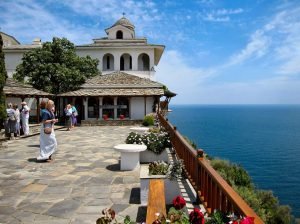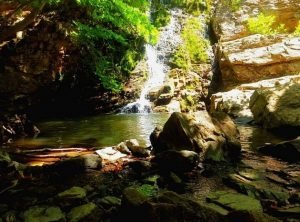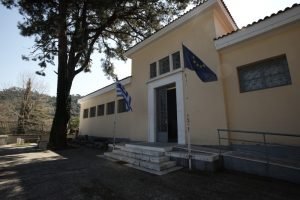About Thassos island
According to an ancient myth, Thassos was the island of the Sirens, the devilish women with a fishtail. It is said that they had such a beautiful voice that every man who heard them sing, fell under their spell. The sirens would afterward devour the enchanted one. In the famous Wanderings of Ulysses (Odysseus in Greek), the sirens who tried to enchant him are supposed to be living in Thassos. Yet, another myth connects Thassos to a young man who arrived on the island in search of his sister, Europa, who had been stolen by Zeus.
Archaeological findings show that the history of Thassos started in the prehistoric times. The first known settlers of the island were Thracian tribes. Around the 7th century BC, the island was colonized by Greeks from Paros, who discovered that Thassos was rich in minerals, especially gold and marble, and covered with forests. Trading became their main source of income and from Thassos, they established settlements in Thrace. The state of Thassos became really powerful around the 5th century BC. In 477 BC, the island became part of the Delian League, which was controlled by Athens.
History
The inhabitants of the island revolted in 465 BC but their revolt was stopped by the Athenians who destroyed their ships and the walls of the city. In 404 BC, the Spartans occupied the island. In 393 BC, the Athenians conquered the island again, but this time bringing democracy and giving Thassos its independence. Around 340, Philip II of Macedonia took control of the island, seizing its mines: Thassos become part of the Macedonian Empire. In 197 BC the Romans took possession of the island, rebuilding the old town and the ancient theatre; the ships of the island started the trading again.
During the 1st century AD, the Apostle Paul came on the island, bringing the Christian Faith and building churches on the ruins of the ancient temple. Around 565, Thassos was taken by the Arabs but quickly liberated by Heraclites. During the 7th century, the island, like all the Greek islands, became the prey of numerous pirate attacks and was often attacked by Slavic pirates. Around 900 Thassos came under the control of the Saracens who were defeated, almost 70 years after, by Nicephorus Phocas.
In 1161 AD, a French count pillaged and destroyed the island, killing some and turning others into slaves. After the division of the Roman Empire, Thassos became a part of Byzantium. During the 14th century, the island came under the rule of the Genoese, who reinforced the Byzantine castle and contributed to the fortification of the island. The Turks seized the island at the end of the 15th century. During the 18th century, the population of Thassos decreased because of the immigration caused by the heavy taxes imposed by the Turks. During the 19th century, the island was governed by an Ottoman Egyptian, who allowed the Islanders to govern themselves and made them in paying taxes.







Recent years
Thassos was liberated and reunited with the rest of Greece in 1912, after many attempts. In 1922, some refugees from Asia Minor settled at Limenas and Limenaria. Like the neighboring Samothraki, Thassos was occupied by Bulgaria in World War II. Since 1960, tourism has become the main source of income for the Islanders. Around 1960, oil was found in the sea around the island. Some oil derricks are still visible at various locations in the sea surrounding Thassos. The history of Thassos emerges from the depths of the ages and reaches modern times.






Sights to visit

Monastery of the Archangel Michael
The Monastery of the Archangel Michael of Thassos is a nunnery that belongs to Mount Athos and was founded by the Monastery of Philotheos around the 13th century. It is located in the southern part of the island, between the villages of Astrida and Alyki and is one of the largest monasteries of Thassos. Built on the edge of the cliff, above a wild cove, it offers a unique spectacle, both to those who see it from afar and to those who overlook the sea from its windows.
More informations : +30 2593 031500
Archaeological Museum of Thassos
The Archaeological Museum of Thassos is a museum located in Limenas on the island of Thasos, Eastern Macedonia, Greece. It occupies a house that was built in 1934 and recently extended. Storerooms and workshops have already been organised, and nowadays is fully operational: the shop, the official functions room, the old wing, the prehistoric collection, and the new section.
Address: Meg. Alexandrou 2, Limenas Thassos 640 04
Telephone: +30 2593 022180


Ancient theater of Thassos
The hollow of the theater had a northwest orientation, ie it had a view to the city and the sea. Its existence was first mentioned by Hippocrates, who lived in Thassos at the end of the 5th c. e.g. At the same time in the area of Thassos lived the comedian and writer Igimon, presenter of the parody, theatrical genre. We do not know if the classical theater was located in the same part of the city as the Hellenistic one. The large marble retaining wall, which was found under the floor of the foreground, is not sure if it belonged to a theater of classical times.

